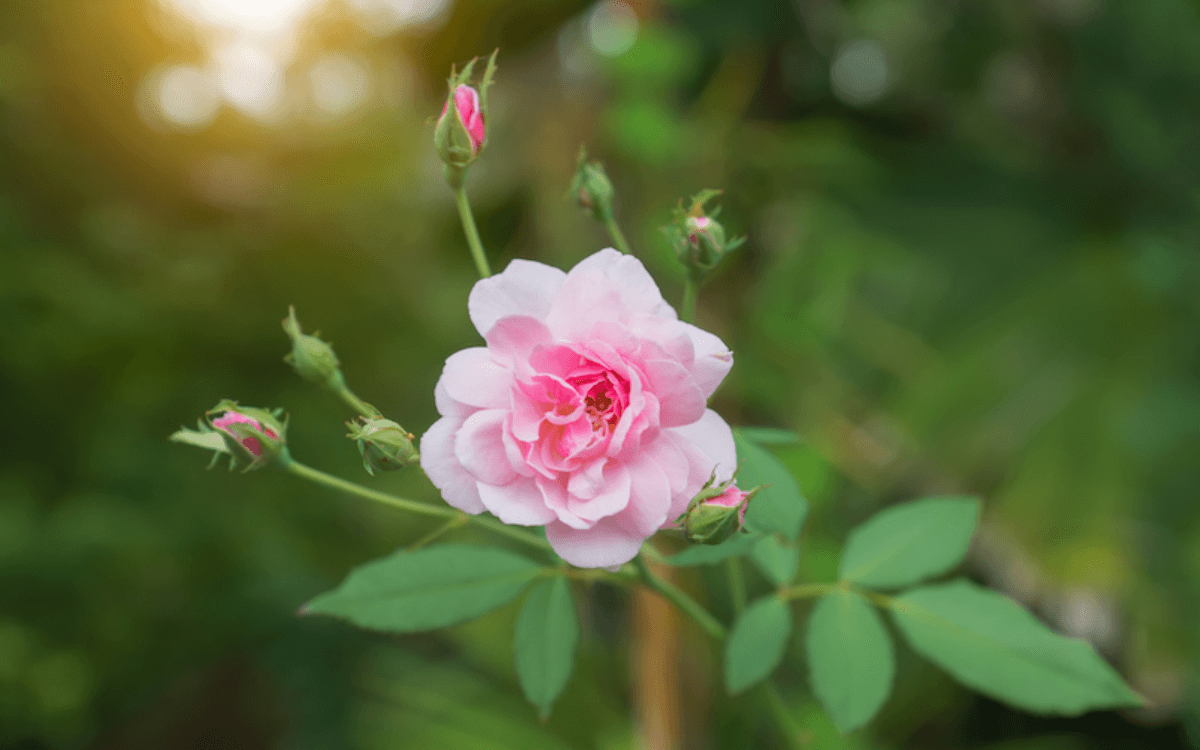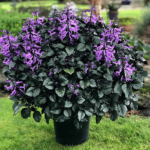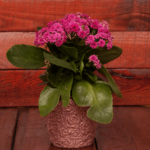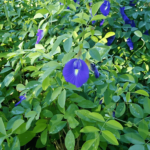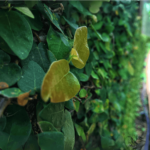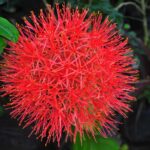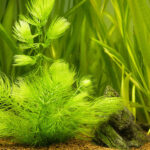The China rose (Rosa chinensis), has won the hearts of gardeners and nature lovers around the world.
With its stunning flowers in a variety of colors, including shades of:
- Red
- Pink
- Yellow
- White
It can be easily grown in different environments, such as pots, planters, flowerbeds, and even as small shrubs in gardens and lawns.
But don’t be fooled by the modest size of this plant, as it exudes personality and charm.
With a height that rarely exceeds 40 centimeters (16 inches), the China rose stands out for its compact elegance and the absence of many thorns, making it an ideal choice for areas where safety is a concern.
In this article, we will dive into the cultivation needs of this plant.
So, keep reading to discover how to incorporate the beauty and delicacy of China roses into your own garden or landscape.
1 – Where to Plant the China Rose

The China rose, with its enchanting beauty, offers a range of possibilities when it comes to choosing the ideal location for its cultivation.
Pots and Planters
The Rosa chinensis is a perfect choice for pots and planters.
Its compact nature and reduced size make it ideal for small containers.
This means you can enjoy the beauty of China roses even in limited spaces, such as balconies and terraces.
Placing them in pots allows you to create stunning floral arrangements and change their location as needed.
Flowerbeds
If you want to be part of a broader landscape, consider planting China roses in flowerbeds.
They can be used to form massive arrangements, adding a burst of color and elegance to your garden.
These little wonders are ideal for creating borders along paths or as living fences, defining areas and creating an enchanting atmosphere.
Paths and Garden Edges
Rosa chinensiss are also a wonderful choice for adorning paths and garden edges. Their colorful flowers and compact size create a welcoming and inviting environment.
They can be planted along paths, providing a unique sensory experience as you walk among their flowers.
Interiors
Don’t limit yourself to the outdoors; China roses can also decorate the interior of your home.
If you have an area with plenty of light and ventilation, like a sunny window, the Rosa chinensis can flourish and thrive indoors.
They add a touch of nature and elegance to indoor environments, becoming an enchanting focal point.
Large Areas and Lawns
Even in larger spaces, China roses can play a significant role in the landscape.
Plant them in groups to create focal areas and add a unique dimension to your lawn.
Their versatility and adaptability to different locations make them ideal for any gardening project.
It’s important to note that, regardless of where you choose to cultivate your China roses, they need some care regarding climate.
2 – Ideal Climate
To ensure that your Rosa chinensiss bloom and develop healthily, it’s crucial to understand the ideal climate for this charming species.
One of the main requirements of this plant is the presence of plenty of sunlight. They love the sun and thrive when cultivated under full sun.
Make sure your China roses receive at least 4 hours of direct sun exposure every day.
Locations with excessive shade can negatively affect the development and flowering of the plants.
The Rosa chinensis adapts well to mild or tropical climates.
They are not very tolerant of extreme temperatures, whether excessive heat or intense cold.
Therefore, it is important to choose a location where temperatures remain within a suitable range throughout the year.
Read more:
- Ficus Lyrata (Fiddle-leaf fig): 7-Step Care Guide
- Ficus Benjamina (Weeping Fig): Plant Info and Care
- Orchid Care for Beginners: Quick and Easy 7-Step Guide
- Ixora (West Indian Jasmine): How to Care and Propagate
- How to Plant, Grow and Care for Celosia (Step by Step)
3 – Ideal Soil
The first essential requirement for the soil of the Rosa chinensis is good drainage.
Excessive water around the roots can be harmful, leading to root rot and consequently affecting the health of the plant.
Make sure the soil allows water to drain easily, preventing water puddles around the plant.
The China rose benefits from a soil rich in organic matter.
Organic matter provides essential nutrients for healthy plant growth, in addition to improving moisture retention in the soil.
This means the soil should be enriched with organic compounds, such as worm castings, to provide the China roses with the nutrients they need.
Before planting your seedlings, it is important to perform proper soil preparation. This includes removing pebbles and compact clumps that may obstruct root growth.
4 – How to Water
Rosa chinensiss appreciate
consistent moisture, but it’s crucial to avoid soil waterlogging.
It is recommended to water the plant regularly, especially during the hotter times of the year.
However, it is essential to allow the soil to dry superficially between watering. This prevents excess moisture, which can lead to the development of harmful fungi and diseases.
When watering the China rose, avoid directly wetting the leaves, as moisture on the leaves can favor the emergence of fungi. Water should be directed to the base of the plant, at the root area.
Use a watering can or an irrigation system that allows an even distribution of water near the soil.
Before watering, check the soil’s moisture by inserting your finger into the earth up to about 1 inch deep. If the soil feels dry at that depth, it’s time to water. If it’s still moist, wait a bit longer before providing water to the plant.
If you are growing Rosa chinensiss in pots, remember that these containers tend to dry out more quickly than garden soil.
Therefore, plants in pots may require more frequent watering. Closely monitor the soil moisture in pots to prevent them from becoming excessively dry.
Make sure the water is at room temperature, not cold, when watering.
5 – Fertilization
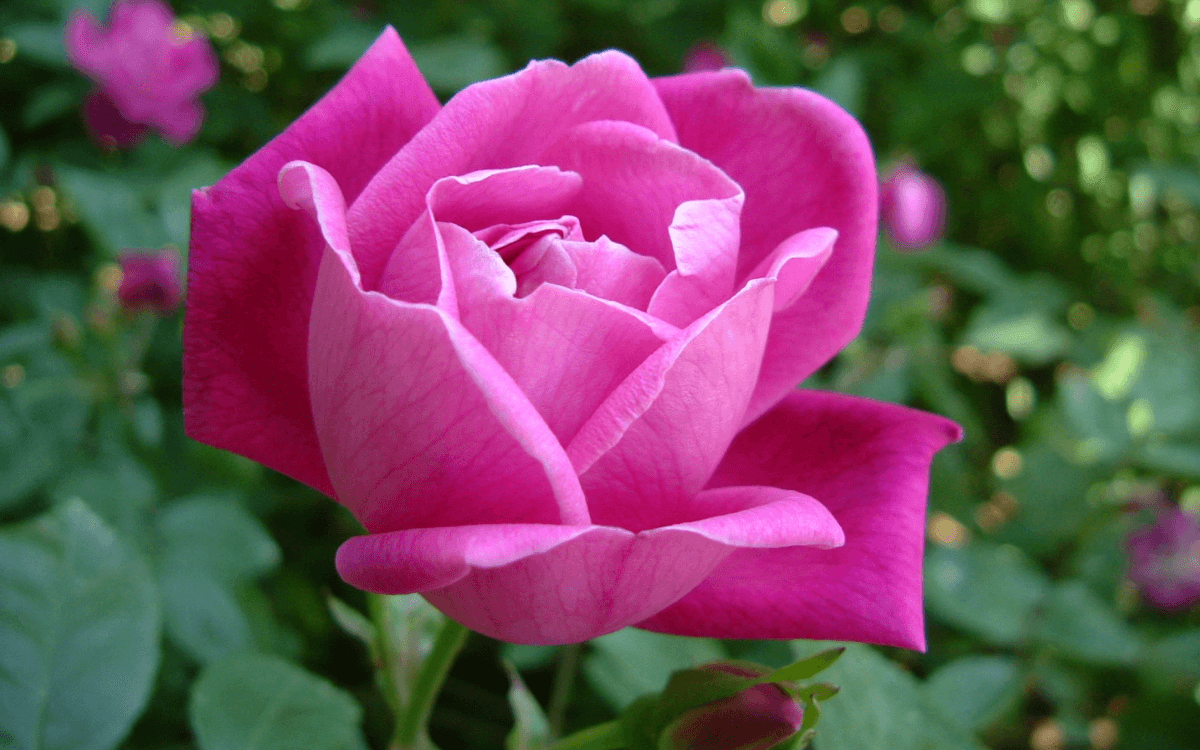
When you cultivate China roses in pots or planters, it is advisable to add fertilizer to the soil mix before planting. This will help provide the necessary nutrients from the start of cultivation.
Mix the fertilizer according to the manufacturer’s instructions, ensuring it is properly incorporated into the soil.
For species planted directly in the ground, outside of pots or planters, the application of fertilizer is equally important. Make sure to spread the fertilizer evenly in the planting area.
To maintain the health and vitality of the China rose, it’s crucial to choose a fertilizer rich in nutrients, especially potassium and phosphorus.
These nutrients play a key role in root development, flower growth, and the plant’s disease resistance.
6 – Planting and Replanting
Before planting, properly prepare the soil.
Till the soil to a minimum depth of 10 inches, removing rocks and clumps that may hinder root growth.
For a good start, fertilize the soil with a mix of quality earth, manure, or organic compost.
If you prefer, you can also plant your Rosa chinensis in a suitable pot.
Make sure the pot has good drainage and is rich in organic matter. This will ensure a favorable environment for the plant’s root development.
The most suitable time for planting is in the spring or summer.
Opt for cloudy days or plant in the late afternoon to prevent the plant from suffering from intense sun during planting.
Below are some tips that will help you with replanting:
- The China rose usually needs to be replanted every two years, or when the pot becomes too small for the plant.
- Replanting is necessary to ensure that the China rose has enough space to grow and develop properly.
- During replanting, be careful not to damage the sensitive roots. Gently remove the plant from the old pot, shaking off the excess soil from the roots.
- Place the Rosa chinensis in the new pot and fill around it with prepared soil. Firmly set the plant in place and water well after transplanting to help eliminate air pockets around the roots.
7 – Propagation
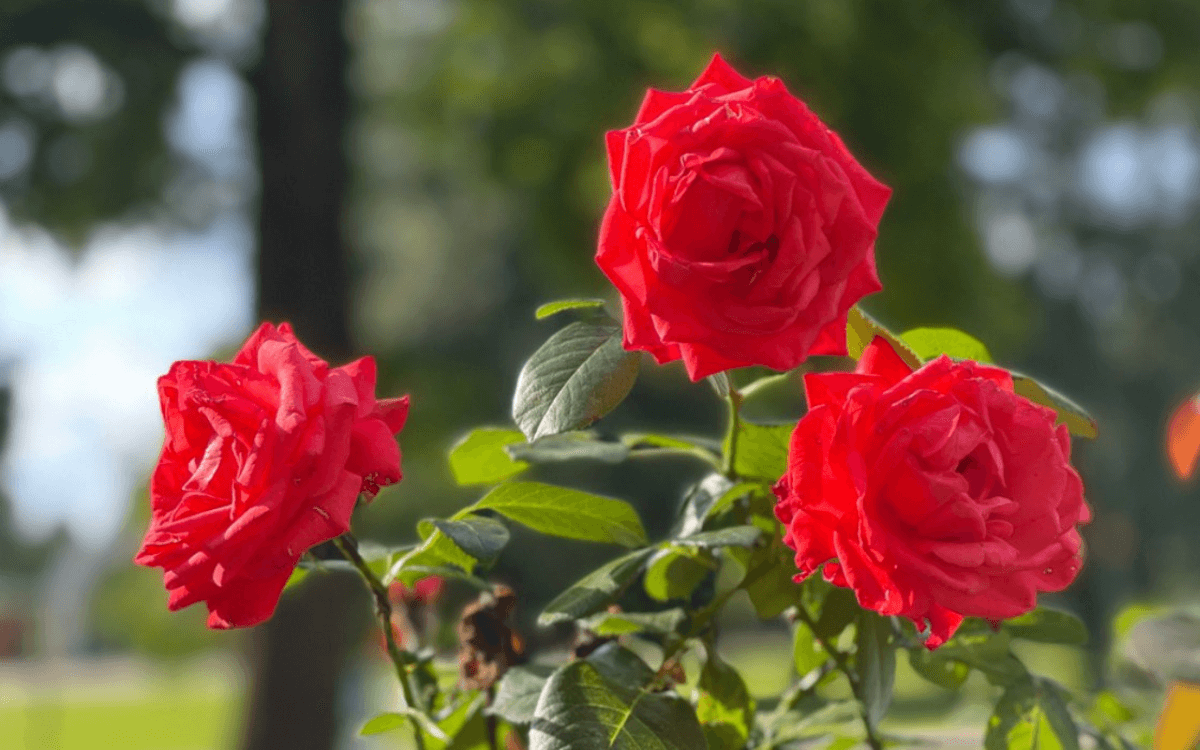
To start, select healthy cuttings about 4 inches long with a few leaves. Remove the lower leaves, leaving only a few at the top of the cutting.
Plant the cuttings in a pot or prepared soil with substrate enriched with worm castings or organic compost.
Make sure the cuttings are buried at an appropriate depth and keep the soil always moist, but avoid waterlogging it.
Place the new seedlings in a partially shaded location, where they will receive indirect light.
Maintain a moist environment around the cuttings, which can be achieved by covering the pot with clear plastic or using a propagator.
This will aid in the rooting of the cuttings.
After about a month, when the cuttings have rooted and begun to grow, you can gradually move them to a location with more direct sunlight.
This will encourage more robust growth.
8 – Pests and Diseases in Rosa chinensis
Like any other plant, the China rose can be susceptible to pests, diseases, and other problems that can affect its health and beauty.
Below, we will explore some of the common pests and diseases that can affect the China rose,
as well as preventive measures to keep your plant healthy and vibrant.
Common Diseases
Black Spot: Black spot is a fungal disease that can affect the leaves of the Rosa chinensis, causing dark spots and weakening the plant. To prevent this disease, avoid watering the leaves during irrigation and remove the affected leaves.
Powdery Mildew: Powdery mildew is another fungus that can develop on the leaves, stems, and buds of Rosa chinensiss, causing a white or grayish coating. Keep the plant well-ventilated to reduce moisture around the leaves and avoid planting too closely, which can favor the spread of this disease.
Rust: Rust is characterized by orange or brown spots on the leaves of the Rosa chinensis. Remove the affected leaves and avoid watering the leaves during irrigation to prevent this disease.
Common Pests
Ants and Insects: China roses are vulnerable to attacks from ants and insects that can damage the plant and hinder its growth. Keep the plant free from the proximity of these unwanted pests, using preventive measures, such as physical barriers or specific treatments, if necessary.
Aphids: Aphids are small insects that feed on the sap of plants, weakening them. Use a water jet to remove them or resort to specific products for aphid control.
Beetles and Borers: These insects can damage leaves and stems. Regularly inspect your China rose to identify the presence of beetles and remove them manually or use appropriate products.
Scales: Scales are small insects that attach to the leaves and stems, sucking the nutrients from the plant. Use neem oil or insecticidal soap to control them.
Thrips: Thrips are tiny insects that can cause damage to flower buds and leaves. Resort to control measures when necessary.
Mites: Mites can create webs on the leaves and extract the sap from the plant. Use a water jet to remove mites or specific products for control.
Preventive Measures
- Keep the plant healthy with proper watering, avoiding root waterlogging.
- Avoid watering the leaves during irrigation to reduce moisture around the leaves.
- Plant your China roses in well-ventilated locations and avoid planting too closely.
- Regularly inspect your plants to identify pests and diseases early.
- Use specific products for prevention and control of pests and diseases, following the manufacturer’s recommendations.
This was our complete guide on the cultivation and curiosities of the Rosa chinensis, if you liked this article, then leave a comment below and also share it on your social networks.

